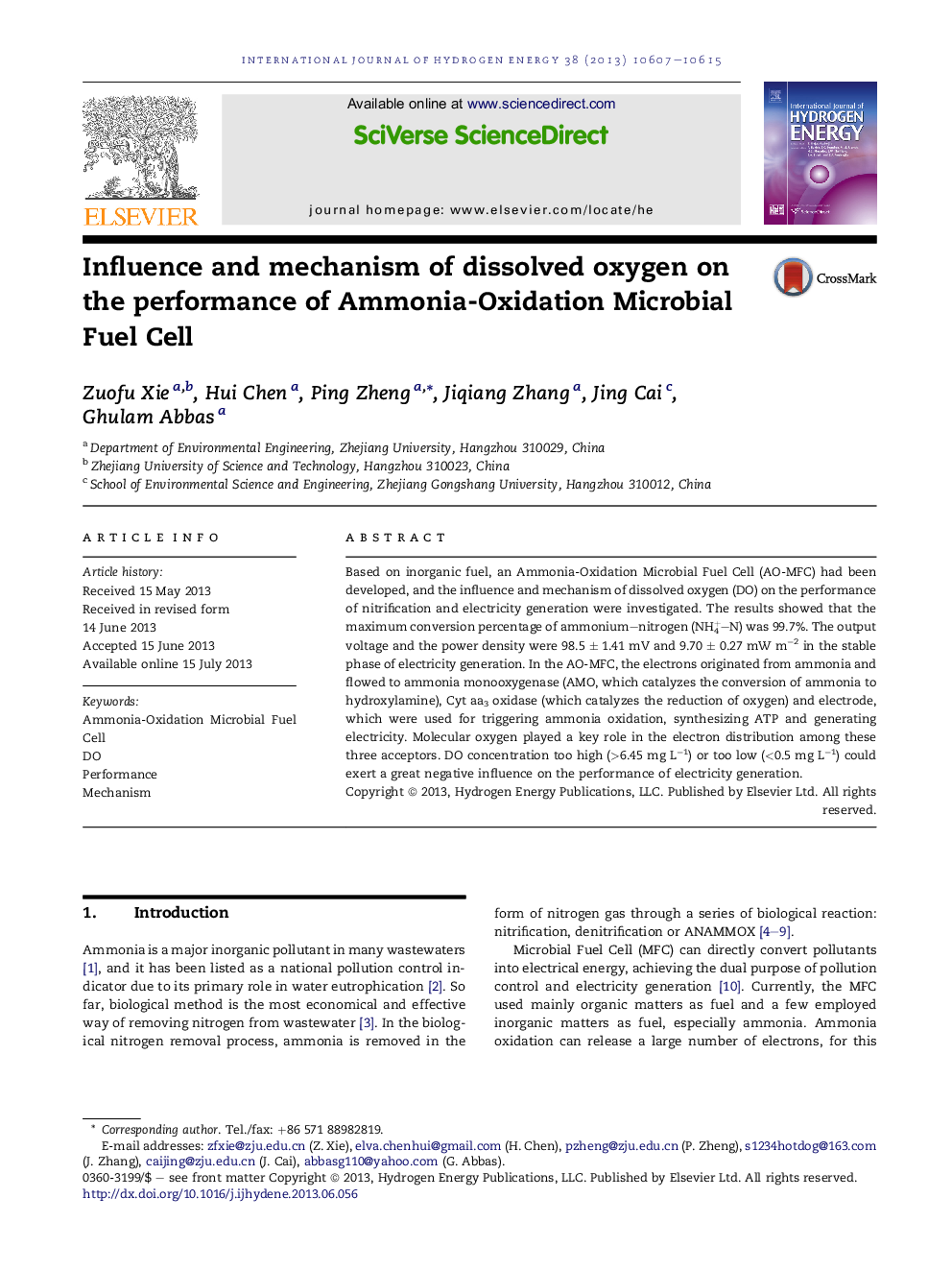| Article ID | Journal | Published Year | Pages | File Type |
|---|---|---|---|---|
| 7722477 | International Journal of Hydrogen Energy | 2013 | 9 Pages |
Abstract
Based on inorganic fuel, an Ammonia-Oxidation Microbial Fuel Cell (AO-MFC) had been developed, and the influence and mechanism of dissolved oxygen (DO) on the performance of nitrification and electricity generation were investigated. The results showed that the maximum conversion percentage of ammonium-nitrogen (NH4+-N) was 99.7%. The output voltage and the power density were 98.5 ± 1.41 mV and 9.70 ± 0.27 mW mâ2 in the stable phase of electricity generation. In the AO-MFC, the electrons originated from ammonia and flowed to ammonia monooxygenase (AMO, which catalyzes the conversion of ammonia to hydroxylamine), Cyt aa3 oxidase (which catalyzes the reduction of oxygen) and electrode, which were used for triggering ammonia oxidation, synthesizing ATP and generating electricity. Molecular oxygen played a key role in the electron distribution among these three acceptors. DO concentration too high (>6.45 mg Lâ1) or too low (<0.5 mg Lâ1) could exert a great negative influence on the performance of electricity generation.
Keywords
Related Topics
Physical Sciences and Engineering
Chemistry
Electrochemistry
Authors
Zuofu Xie, Hui Chen, Ping Zheng, Jiqiang Zhang, Jing Cai, Ghulam Abbas,
